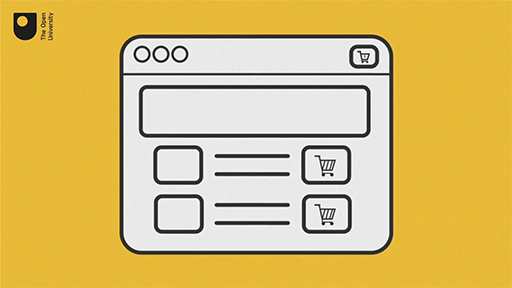2.3 Calculating original amounts
A situation that can be a little tricky to understand is how to undo a percentage change that has been added to or subtracted from a number. The video below will show how to work this out, again using an example with discounts and VAT.

Transcript
From the video, you can check your answer by working out the 5 per cent postage charge on £28.57 to see that the grand total will be £30.
Many people in this situation may think that they can work out 5 per cent of £30 and subtract this from the £30 to find out how much they can spend. Try this now.
5% of £30 = 0.05 × £30 = £1.50
£30 – £1.50 = £28.50
This answer is 7p less than using our other method! So something must be wrong.
The reason for this is because this is all to do with what it’s 5% of! 5% of different numbers gives a different answer. The 5% added here is 5% of £28.57. 5% of £30 isn’t the same as 5% of £28.57 – it’s a bigger number.
This is an important idea to remember. Have a go at this in the next two activities.
Activity 7 What was the price before VAT?
The price of a tennis racquet, including 20 per cent VAT, is £45.24. What was the price before VAT?
Hint: the £45.24 includes VAT. What percentage does this total represent? Find the monetary amount that represents 1 per cent, and use that figure to arrive at 100 per cent.
Answer
The price before VAT was added is the original 100 per cent.
So £45.22, which includes VAT, is equivalent to 120 per cent of the cost (100% + 20%).
1 per cent of £45.24 = £45.24 ÷ 120
Thus, the price of the tennis racquet before VAT was applied was £37.70.
Activity 8 What was the original price before a sale?
I saw a coat in a sale. Its sale price was advertised as £64, which was after a 20% discount.
Unfortunately, I wasn’t able to buy it in the sale – the sale was ending soon and I’d not yet been paid that month.
However, as I really liked the coat, I thought I might buy it anyway at full price once I’d been paid. How much would it cost me when not in the sale?
Answer
The price before the sale is the original 100 per cent.
In the sale, 20% was taken off. That means 80% was left. So £64 is 80%.
You can work out what 1% is by doing £64 ÷ 80 = £0.80
Based on this, 100% is 100 × £0.80 = £80. So, the price of the coat when it’s not in the sale is £80.
You have very nearly finished your work on percentages for this week, but before you move onto ratios you’re going to take a quick look at the idea of percentage points. You may have heard or read about these in news reports, but not really thought about what these mean. Now it’s your chance to find out about the important difference between percentages and percentage points.
